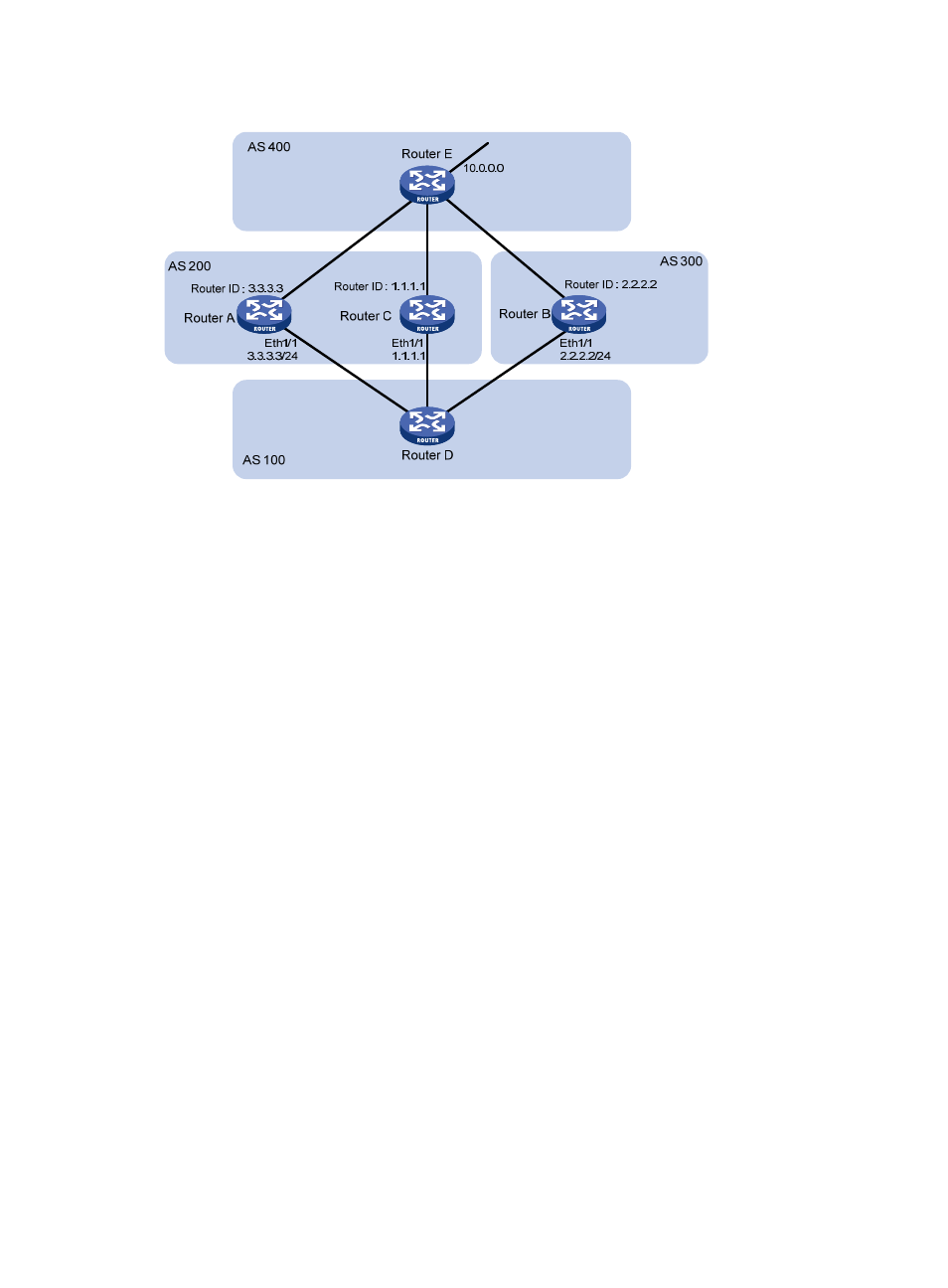H3C Technologies H3C S12500 Series Switches User Manual
Page 239

223
Figure 83 Route selection based on MED
As shown in
, Router D learns network 10.0.0.0 from both Router A and Router B. Because
Router B has a smaller router ID, the route learned from it is optimal.
Network NextHop MED LocPrf PrefVal Path/Ogn
*>i 10.0.0.0 2.2.2.2 50 0 300e
* i 3.3.3.3 50 0 200e
When Router D learns network 10.0.0.0 from Router C, it compares the route with the optimal route in
its routing table. Because Router C and Router B reside in different ASs, BGP will not compare the MEDs
of the two routes. Router C has a smaller router ID than Router B, the route from Router C becomes
optimal.
Network NextHop MED LocPrf PrefVal Path/Ogn
*>i 10.0.0.0 1.1.1.1 60 0 200e
* i 10.0.0.0 2.2.2.2 50 0 300e
* i 3.3.3.3 50 0 200e
However, Router C and Router A reside in the same AS, and Router C has a greater MED, so network
10.0.0.0 learned from Router C cannot be optimal.
You can configure the bestroute compare-med command on Router D. After that, Router D puts routes
received from the same AS into a group. Router D then selects the route with the lowest MED from the
same group, and compares routes from different groups. This mechanism avoids the above-mentioned
problem. The following output is the BGP routing table on Router D after the comparison of MED of routes
from each AS is enabled. Network 10.0.0.0 learned from Router B is the optimal route.
Network NextHop MED LocPrf PrefVal Path/Ogn
*>i 10.0.0.0 2.2.2.2 50 0 300e
* i 3.3.3.3 50 0 200e
* i 1.1.1.1 60 0 200e
BGP load balancing cannot be implemented because load balanced routes must have the same
AS_PATH attribute.
To enable the comparison of MED of routes from each AS: